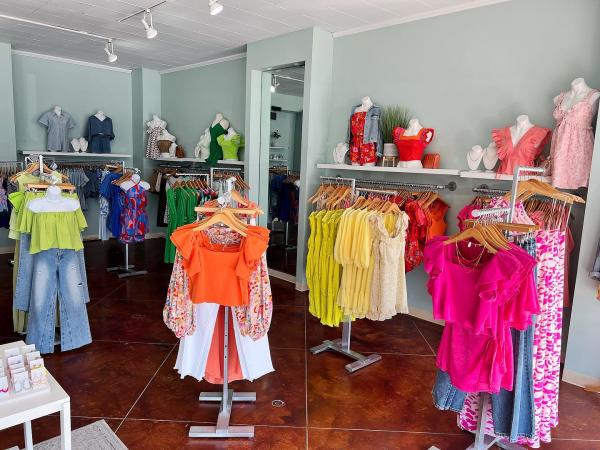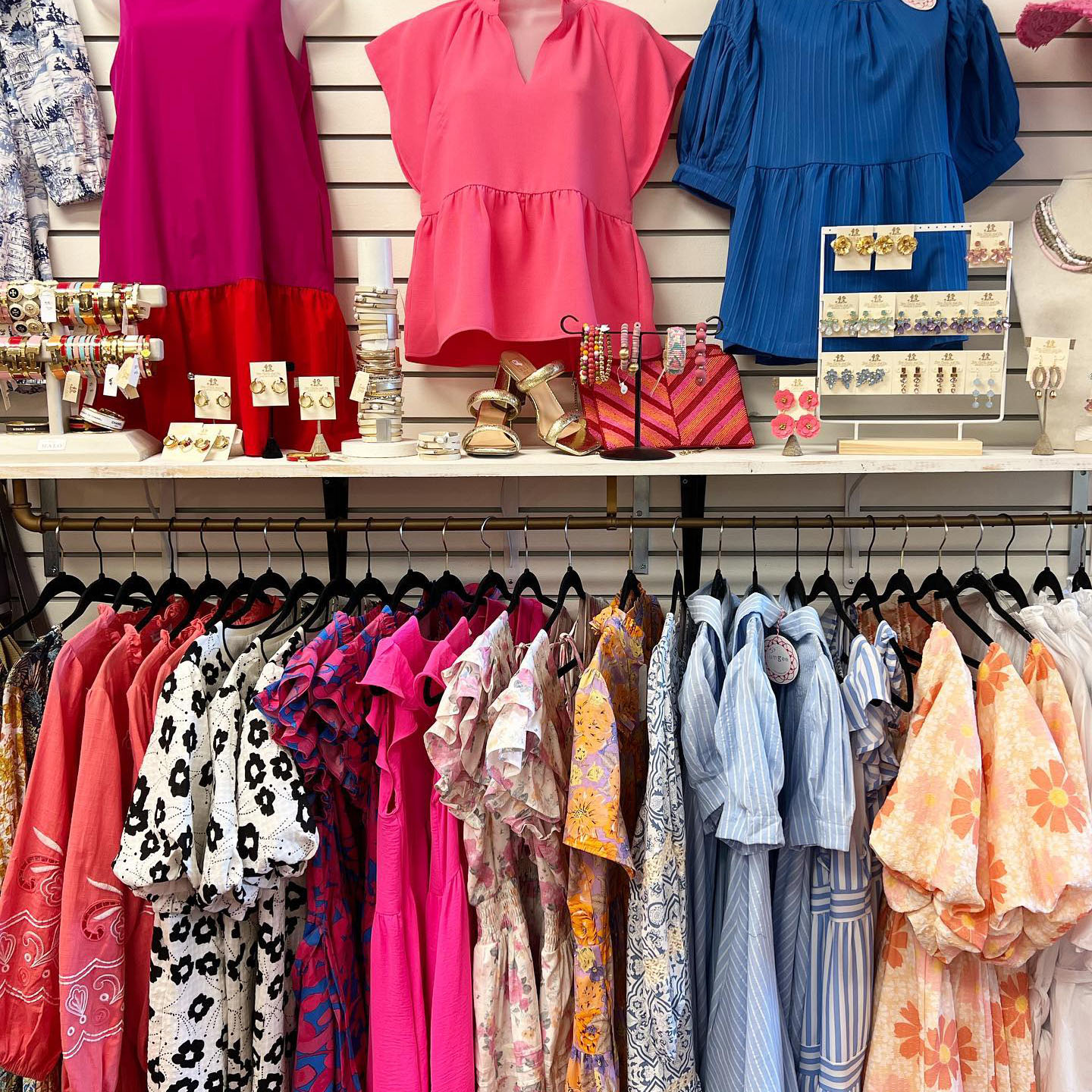Checking out the World of Lasting Boutique Fashion Brands
Checking out the World of Lasting Boutique Fashion Brands
Blog Article
Sustainable Fashion: How Eco-Friendly Garments Is Forming the Future of Design
As the style sector encounters raising analysis over its ecological influence, the surge of lasting fashion uses a promising choice that straightens style with ecological responsibility. boutique fashion. Just how does this movement truly affect the future trajectory of fashion, and what difficulties exist in advance in its extensive adoption?
Cutting-edge Sustainable Products
As the fashion business comes to grips with its ecological impact, cutting-edge lasting materials have actually become an essential option for minimizing ecological impacts. Amongst the most promising materials are those originated from natural, eco-friendly resources, such as organic cotton, hemp, and bamboo. These materials not just minimize dependence on nonrenewable fuel sources yet likewise minimize dangerous pesticide use and water consumption. Organic cotton, for example, uses dramatically much less water than conventional cotton and removes the need for toxic chemicals, therefore protecting dirt health and wellness and biodiversity.
Along with plant-based materials, advancements in biofabrication have actually caused the growth of lab-grown fabrics. Mycelium natural leather, stemmed from mushroom origins, offers a biodegradable and versatile alternative to animal leather. Its production results in considerably reduced carbon emissions and water use, making it an extra lasting alternative for designer looking for to line up with green techniques.
Recycled products are additionally obtaining grip, with polyester made from recycled plastic containers standing for a considerable breakthrough. This development not only draws away plastic waste from oceans and garbage dumps but also reduces power consumption compared to generating virgin polyester. With each other, these materials underscore the potential for a more lasting garment industry, leading the means for ecologically mindful design and manufacturing.
Eco-Conscious Production
Building on the advancements in lasting materials, the style industry is likewise re-evaluating its production processes to better minimize ecological effect. Key strategies include decreasing water consumption, minimizing carbon discharges, and eliminating harmful chemicals.
An additional essential aspect is the reduction of hazardous chemicals commonly used in coloring and ending up textiles. Eco-conscious makers are shifting towards plant-based dyes and waterless dyeing modern technologies, which not just protect regional environments yet additionally improve worker safety and security. Developments like electronic printing lower textile waste and energy intake, using a cleaner choice to traditional techniques.
Moreover, openness and traceability have actually become extremely important. With the development of blockchain innovation, business can now supply detailed insights right into their supply chains, making certain moral and eco-friendly methods at each step. This transparency constructs customer depend on and motivates brands to keep high sustainability criteria. As the demand for eco-conscious products expands, makers are forced to innovate, making certain that the future of fashion is both lasting and stylish.
The Increase of Upcycling
Upcycling, a transformative practice in lasting fashion, entails artistically repurposing thrown out materials right into new, premium products. This innovative strategy not only reduces waste yet additionally lessens the demand for raw materials, consequently decreasing the ecological influence of clothes production. By reimagining and rebuilding existing items, designers and fashion brand names are able to instill originality right into their collections while promoting ecological responsibility.

Moreover, the upcycling movement has actually empowered small services and independent designers, that typically lead in advancement because of their agility and creativity. By maximizing the bountiful accessibility of unused materials, these entities add to a round economic climate, showing that style can be both sustainable and stylish. Via upcycling, the industry takes substantial strides in the direction of a more mindful and accountable future.
Thrift Society's Impact
The burgeoning second hand society significantly improves the landscape of sustainable fashion, stressing the value of mindful usage. This social change motivates consumers to welcome previously owned clothes, therefore minimizing the demand for brand-new garment manufacturing and reducing ecological impact. Second hand shopping not just prolongs the lifecycle of clothing however also reduces the carbon footprint connected with manufacturing, delivering, and disposing of clothing.
A key element of thrift society is its democratization of fashion. By using a wide variety of designs from different eras at affordable costs, second hand stores make fashion available to a wider target market. More about the author This ease of access promotes a feeling of individuality and creativity, as consumers mix and suit special items to curate customized closets without adding to the quick fashion cycle.
In addition, thrift culture advertises circularity in vogue, lining up with the concepts of a round economic situation. By recirculating garments, the cycle of waste is interfered with, and resources are preserved. This method supports a shift from a direct "take-make-dispose" version to a more lasting structure. As more designers and consumers embrace second hand society, the fashion industry is forced to adjust, integrating sustainable methods to satisfy the expanding demand for eco-conscious choices.

Future Trends in vogue
Fashion's advancement is progressively shaped by sustainability-driven initiatives and technical developments. One noticeable trend is the increase of electronic style, where virtual garments can be put on in enhanced truth settings, considerably lowering fabric waste.
In addition, the assimilation of blockchain modern technology provides new opportunities in transparency and traceability, allowing customers to validate the sustainability qualifications of their clothing. boutique fashion. This guarantees liability in supply chains and advertises moral sourcing techniques. 3D printing is yet one more innovation that promises to transform manufacturing processes by enabling on-demand production, therefore lowering excess supply and waste
As these technologies grow, they are poised to change the style landscape, combining design with sustainability. The future of style, therefore, exists in a smooth blend of technology, advancement, and eco-friendly responsibility.
Conclusion
The transformation of the apparel industry through lasting methods shows a crucial change in the read the article direction of ecological liability. The integration of cutting-edge products, eco-conscious manufacturing strategies, and the embracement of upcycling and second hand culture underscores a dedication to decreasing ecological impacts. As these methods acquire energy, they redefine the market's narrative by focusing on sustainable and moral choices. This evolution not just straightens fashion with eco-friendly sustainability yet likewise establishes a criterion for future fads concentrated on obligation and innovation.
As the style market faces boosting analysis over its environmental effect, the surge of sustainable style visit our website uses an appealing choice that aligns style with ecological obligation.As the fashion industry grapples with its environmental effect, ingenious lasting materials have emerged as a crucial option for reducing eco-friendly footprints. With each other, these products emphasize the potential for an extra sustainable fashion industry, paving the means for eco aware layout and manufacturing.
Structure on the innovations in sustainable materials, the style industry is additionally re-evaluating its manufacturing processes to further decrease environmental influence. boutique fashion.Upcycling, a transformative practice in sustainable style, entails creatively repurposing thrown out materials into new, premium products
Report this page